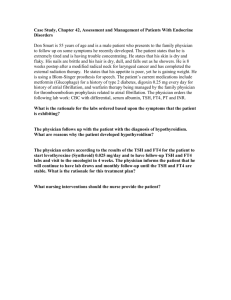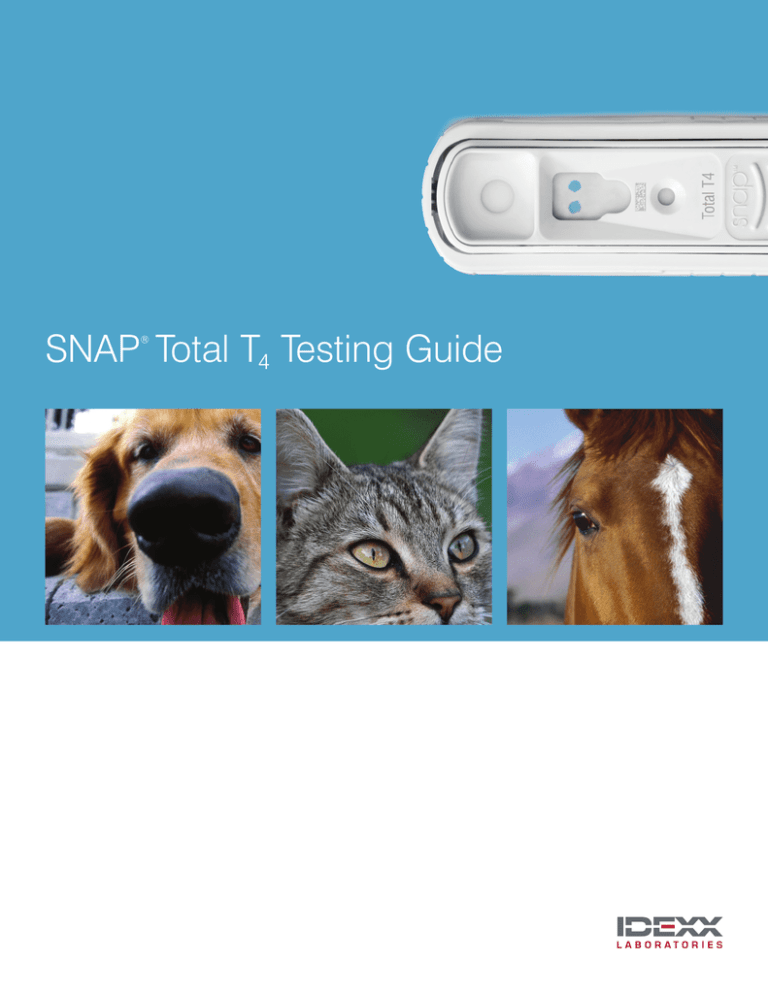
SNAP Total T4 Testing Guide
®
Canine Hypothyroidism
Dynamic Range
0.5–7.0 µg/dL
(6.4–90.0 nmol/L)
Canine Screening
•D
ogs with low total T4 (T4) and evidence of
nonthyroidal illness (NTI) should have NTI addressed.
• Dogs with T4 results in the low normal range
may be hypothyroid.
SNAP® Total T4 Results
Low
<1.0 µg/dL (<13 nmol/L)
Low Normal
1.0–2.0 µg/dL (13–26 nmol/L)
Normal
1.0–4.0 µg/dL (13–51 nmol/L)
High
>4.0 µg/dL (>51 nmol/L)
Therapeutic
2.1–5.4 µg/dL (27–69 nmol/L)
• In dogs with low or low normal T4 results and with
consistent clinical signs, consider free T4 (fT4) and
endogenous thyroid-stimulating hormone (TSH) and
possibly thyroglobulin autoantibodies (TgAA) to aid in
confirming hypothyroidism.
Hypothyroidism Therapeutic Monitoring
For dogs on thyroid supplement, acceptable 4–6-hour
post-pill T4 values will generally fall in the upper end of
the reference range or slightly above.
Algorithm
Canine Hypothyroidism Suspected
Common Clinical
Signs in Dogs
• Obesity
• Skin Disease
• Lethargy
• Mental dullness
• Exercise/cold intolerance
Low T4 with NTI
<1.0 µg/dL
Initial Database
• Total T4
• CBC
• Biochemical profile
• Electrolytes
• Urinalysis
Low T4
<1.0 µg/dL
Low Normal T4
1.0–2.0 µg/dL
Address NTI
Normal T4
>2.0–4.0 µg/dL
Hypothyroidism unlikely
fT4 + TSH ± TgAA
CBC = Complete blood count
Note: 1 µg/dL is equal to 12.87 nmol/L. A result
that falls within the low normal range of the assay
should be considered ambiguous.
Low fT4 ± high TSH
± positive TgAA
Normal fT4 and TSH
negative TgAA
Hypothyroidism likely
Hypothyroidism unlikely
Clinical trial
Repeat testing in 4–6 weeks if
hypothyroidism still suspected
Feline Hyperthyroidism
Dynamic Range
0.5–7.0 µg/dL
(6.4–90.0 nmol/L)
SNAP® Total T4 Results
Subnormal
<0.8 µg/dL (<10 nmol/L)
Normal
0.8–4.7 µg/dL (10–60 nmol/L)
Gray zone in old or symptomatic cats 2.3–4.7 µg/dL (30–60 nmol/L)
Consistent with
hyperthyroidism
>4.7 µg/dL (>60 nmol/L)
Feline Screening
Cats with consistent clinical signs and total T4 (T4)
values in the borderline high range (gray zone) may
have early hyperthyroidism or a concurrent nonthyroidal
illness (NTI). In these cases, consider a free T4 (fT4), a T3
suppression test or radionuclide thyroid imaging to aid in
confirming the diagnosis.
Hyperthyroidism Therapeutic Monitoring
Following treatment with methimazole, T4 values will
generally fall within the lower to midportion of the
reference range.
Algorithm
Feline Hyperthyroidism Suspected
Common Clinical
Signs in Cats
• Weight loss
• Hyperactivity
• Polyphagia
• Palpable goiter
• Unkempt coat
Low T4
<0.8 µg/dL
Euthyroid sick
or iatrogenic
*If strong suspicion of hyperthyroidism still exists,
consider retesting in 4–6 weeks or a technetium scan.
CBC = Complete blood count
Note: 1 µg/dL is equal to 12.87 nmol/L. A result that
falls within the gray zone of the assay should be
considered ambiguous.
Initial Database
• Total T4
• CBC
• Biochemical profile
• Electrolytes
• Urinalysis
Normal T4
0.8–2.3 µg/dL
Gray Zone
2.4–4.7 µg/dL
High T4
>4.7 µg/dL
Low or
normal fT4
High fT4
Hyperthyroidism
unlikely*
Hyperthyroidism likely
Equine Hypothyroidism
Dynamic Range
0.5–7.0 µg/dL
(6.4–90.0 nmol/L)
SNAP® Total T4 Results
Low
<1.0 µg/dL (<13 nmol/L)
Normal
1.0–3.8 µg/dL (13–49 nmol/L)
High
>3.8 µg/dL (>49 nmol/L)
Note: 1 µg/dL is equal to 12.87 nmol/L.
© 2011 IDEXX Laboratories, Inc. All rights reserved. • 09-79929-00
All ®/ TM marks are owned by IDEXX Laboratories, Inc. or its affiliates in the United States and/or other countries.
The IDEXX Privacy Policy is available at idexx.com.


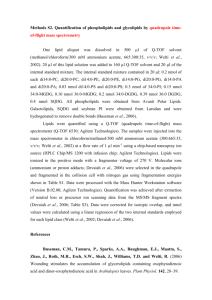
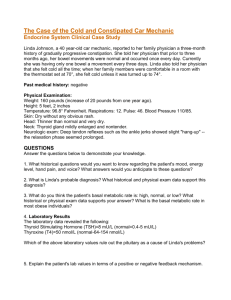

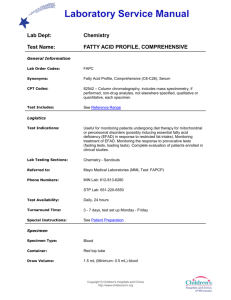
![Michaelis Menten Plot Lineweaver-Burke Eadie Hofstee [S] (mM](http://s3.studylib.net/store/data/006783200_1-6f852f20ab04d5dae16be5528b1f30cf-300x300.png)
